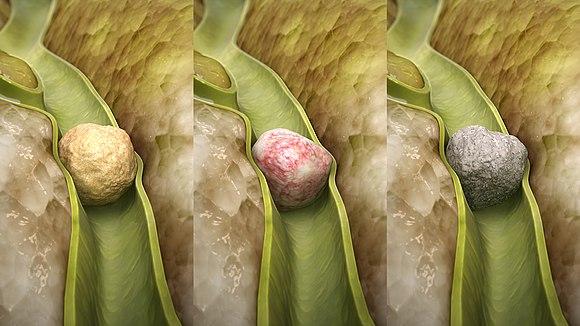GuruNanda Coconut Oil Pulling with 7 Essential Oils and Vitamin D3, E, K2 (Mickey D), Helps with Fresh Breath, Teeth & Gum Health & More - 16 fl oz
20% OffIntroduction
When it comes to gallstones, one type that often raises concern is brown pigment gallstones. These stones are formed due to an excessive buildup of bilirubin, a brownish-yellow pigment found in bile. Dissolving brown pigment gallstones is a topic of great interest, as it offers an alternative to surgical interventions like cholecystectomy. In this comprehensive article, we will delve into the dissolution of brown pigment gallstones, exploring the causes, symptoms, diagnosis, and various treatment options available. Let’s dive right in!
What are Brown Pigment Gallstones?
Brown pigment gallstones, also known as mixed pigment stones, are one of the two main types of gallstones, with the other being cholesterol stones. These stones are composed of a combination of calcium salts, cholesterol, bilirubin, and other substances. Unlike cholesterol stones, which are yellow and typically associated with high cholesterol levels, brown pigment gallstones are brown or black in color and are primarily formed due to excessive bilirubin levels in the bile.
Causes of Brown Pigment Gallstones
The formation of brown pigment gallstones is often linked to underlying medical conditions that lead to increased bilirubin production or impaired bile flow. Some common causes include:
- Biliary Tract Infections: Infections in the biliary tract can disrupt the normal flow of bile, leading to the formation of brown pigment gallstones.
- Liver Disease: Certain liver diseases, such as cirrhosis and hepatitis, can cause an increase in bilirubin levels, contributing to the formation of gallstones.
- Hemolytic Anemias: Conditions that cause an accelerated breakdown of red blood cells, such as sickle cell anemia or thalassemia, can result in excessive bilirubin production, increasing the risk of gallstone formation.
- Bile Duct Obstruction: Blockages in the bile ducts due to tumors, strictures, or other causes can disrupt the normal flow of bile, leading to the formation of gallstones.
Symptoms and Diagnosis
Brown pigment gallstones may not always cause noticeable symptoms. However, when symptoms do occur, they are similar to those associated with other types of gallstones. Some common symptoms include:
- Abdominal pain, usually in the upper right portion
- Nausea and vomiting
- Indigestion and bloating
- Back pain between the shoulder blades
- Yellowing of the skin and eyes (jaundice)
To diagnose brown pigment gallstones, doctors may perform several tests, including:
- Ultrasound: This imaging test uses sound waves to create pictures of the gallbladder and detect the presence of gallstones.
- Blood Tests: Blood tests can help evaluate liver function and detect any abnormalities, such as elevated bilirubin levels.
- Endoscopic Retrograde Cholangiopancreatography (ERCP): In this procedure, a flexible tube with a camera is inserted through the mouth and into the bile ducts to obtain images and identify any blockages or stones.
- Computed Tomography (CT) Scan: CT scans provide detailed images of the gallbladder and surrounding structures, aiding in the diagnosis of gallstones and identifying any complications.
Dissolution of Brown Pigment Gallstones
- Ursodeoxycholic Acid (UDCA) Therapy: UDCA is a medication commonly used to dissolve cholesterol gallstones, but it can also be effective in dissolving small brown pigment gallstones. The medication helps to reduce the production of bilirubin, which aids in the gradual dissolution of the stones. UDCA therapy may take several months or even years to achieve complete dissolution.
- Contact Dissolution Therapy: This technique involves direct contact of the gallstones with a solvent through a catheter. Solvents such as methyl tertiary-butyl ether (MTBE) or monooctanoin are used to dissolve the stones. However, this method is less commonly used due to the risk of complications and the availability of safer alternatives.
- Extracorporeal Shock Wave Lithotripsy (ESWL): ESWL is a non-invasive procedure that uses high-energy shock waves to break up gallstones. Once fragmented, the smaller stones can be dissolved more easily through medication or naturally flushed out of the body. ESWL is primarily used for cholesterol gallstones, but it may be considered for select cases of brown pigment gallstones.
Frequently Asked Questions (FAQs)
Q: Can brown pigment gallstones be prevented? A: While it may not be possible to prevent all cases of brown pigment gallstones, maintaining a healthy lifestyle, managing liver diseases, and promptly treating biliary tract infections can help reduce the risk.
Q: Are there any dietary recommendations for individuals with brown pigment gallstones? A: While specific dietary guidelines may vary depending on individual circumstances, a balanced diet low in fat and high in fiber, along with adequate hydration, is generally recommended.
Conclusion
Dissolution of brown pigment gallstones offers a promising alternative to surgical interventions for individuals with smaller stones and those who may not be suitable candidates for surgery. With the right treatment approach and appropriate management of underlying conditions, it is possible to dissolve these gallstones and alleviate associated symptoms. If you suspect you may have gallstones, it is essential to consult with a healthcare professional who can provide an accurate diagnosis and recommend the most suitable treatment options.
Dr. Ahmed Raza, a renowned gastroenterologist with over 20 years of experience, is the dedicated founder of LifeWithNoGallbladder. With a passion for improving gallbladder health, Dr. Raza shares extensive insights, records, and guidance through his blog, providing individuals with the necessary information to make informed decisions.















